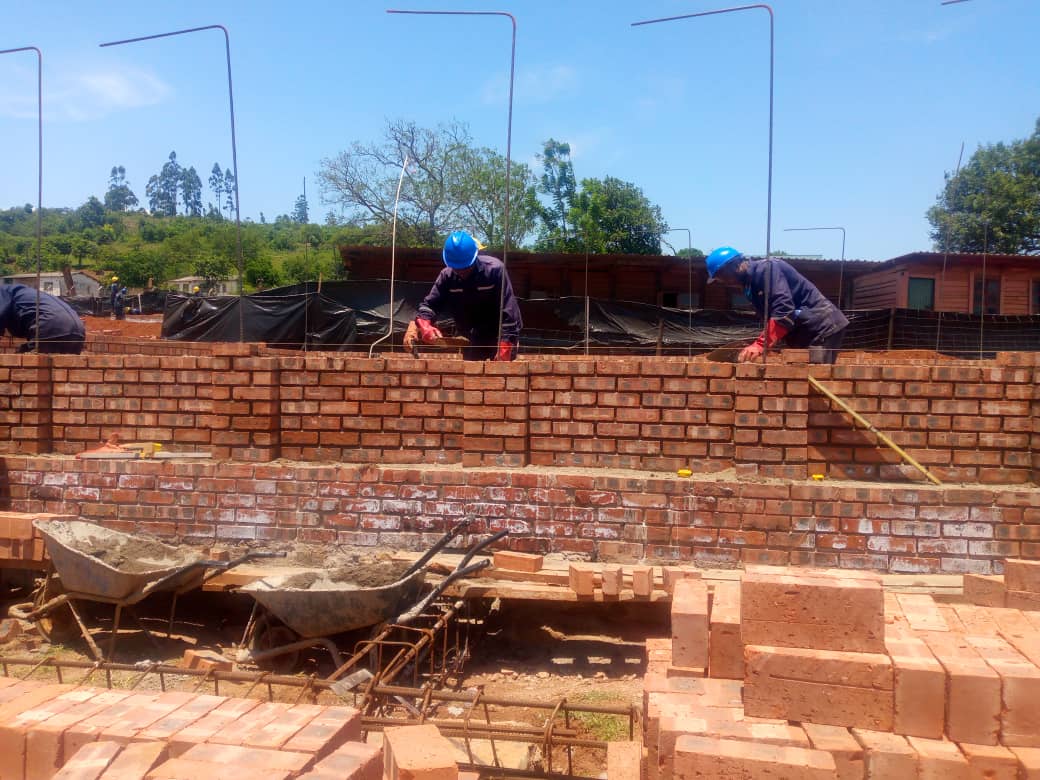Improving access to quality and inclusive education through sustainable infrastructure
 Quality and resilient infrastructure places learners on a pathway to inclusive quality education. Children with better infrastructure generally tend to perform better in school than those without.
Quality and resilient infrastructure places learners on a pathway to inclusive quality education. Children with better infrastructure generally tend to perform better in school than those without.
In this light, UNOPS Zimbabwe under Zimbabwe Idai Recovery Project is building back better school infrastructure that was destroyed by Cyclone Idai. Seven schools are currently under construction.
To ensure the infrastructure is resilient to climate change, the schools are built on a 150 mm thick stone masonry foundation reinforced at mid level and ground beams made of steel. Above this special foundation, the concrete beam foundation is then cured. The superstructure is constructed using fire burnt clay bricks. The thickness of the walls has been increased to 345 mm ensuring that the buildings will survive earth tremors, floods and mudslides.
The buildings are orientated to create clear pathways of connection and orient buildings for the central forum. Provision has been made for open play and structured play areas. Integration of vegetation is used to facilitate shading and wind directing.
Windows on both of the long ends of the classroom allow for passive cross ventilation and natural light making it easy for learners to read and write.
The geometry and the central focus of the school landscaping is based on an emphasis on learning through play. In playful learning, children try out ideas, test theories, experiment with symbol systems, explore social relations, take risks, and reimagine the world.
To support the infrastructure, learning materials have been distributed in schools. To date, 88,516 students in 134 schools benefited from teaching and learning supplies.
400 Early Childhood Development (ECD) kits, 64,418 school backpacks and 300 recreational kits have been distributed.
While waiting for the schools construction to be completed, 92 classroom tents were distributed in Chimanimani and Chipinge districts.
UNOPS remain committed to strengthening resilience and building back better.
